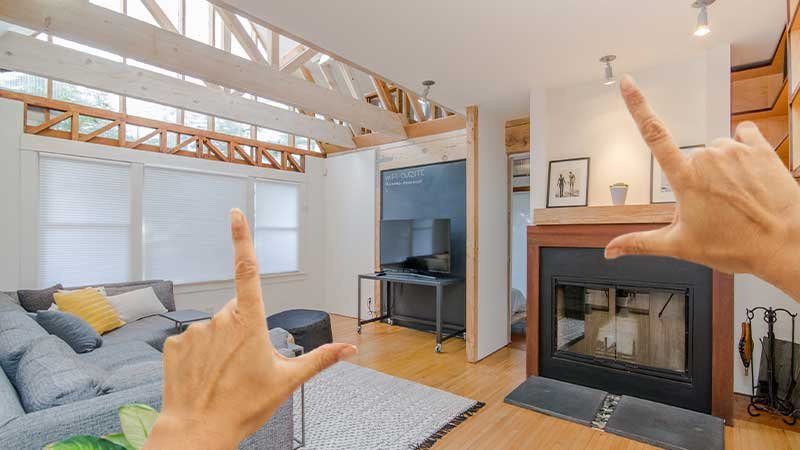A Beginner’s Guide to Woodworking
This article contains four essential basics for woodworking beginners.
Woodworking is a hobby perfect for relieving stress and expressing your artistic side. However, many people who start woodworking often struggle.
For beginners in woodworking, there are some important things that one has to keep in mind. This guide should help a beginner avoid the general errors people new to woodworking make and help him/her walk on the right track.
These four fundamentals will help you complete your first woodworking project.
1. Designate a Separate Area for Woodworking
As a beginner, we have to plan to organize our workspace. Neatly storing and organizing tools and building materials is vital; you must be able to locate your materials whenever you need them. The best area to designate for woodworking would be a basement or garage, as you will not have to set up and take down your workstation each time and simply leave it up.
The most important issue to consider is whether the area is effectively ventilated and cleared of dust. Improper ventilation and an unchecked accumulation of sawdust can pose a serious health hazard.
You can have two benches in the workshop area; one for assembling individual parts and another for sanding and adding finishing touches.
2. Understand the Nature and Properties of the Wood You are Using
Woodworking is a hobby that requires sound investment in high-quality materials and machinery. When you start woodworking, you should always be aware of the price of the wood and its properties.
As a beginner, you should use wood that is cheaper as you develop basic skills. For softwood, use pine, spruce, or fir. Oak, walnut, maple, and birch are useful hardwoods. Some lightweight woods are easy to work with, but structurally weak and brittle. On the other hand, hardwoods like oak have their own disadvantages as well.
For woodworking, we need to understand the nature and properties of the wood used to ensure that we are using the right wood for the project.
Wood contracts and expands with temperature change, moisture, and other conditions. Be aware, especially when working outdoors, of how different conditions can warp or otherwise affect the property of the wood you are working with.
In addition, understanding the grain of the wood will help you know the way to properly cut it. You should also be aware of which types of wood are most suitable attached with wood glue.
3. Start Simple DIY Projects
Since you are a beginner, the easiest way to learn is by taking on simple DIY projects. They consist of small, simple steps that are easy to follow. As you follow the directions, you will gradually see the fruits of your hard labor and efforts appear in front of your eyes. Making something tangible will add a huge boost to your confidence. So what are you waiting for? Tom Bradly is here to help you succeed in your DIY woodworking projects!
4. Sequential Steps in Woodworking and Required Tools
There are many woodworking instruments available in the market. Buying many at a time will be overwhelming and expensive, so you should stick to a few essential tools in the early stages of your woodworking career.
Below are some basic woodworking steps along with the required tools for each step.
- First step: Measuring and Marking and Tools required for it: Essential tools for measuring and marking are a tape measure, a carpenter’s pencil, and a square. You will have to be able to read measurements like 14 3/7 and 18 6/11.
- Second Step: Cutting Wood and Tools Required for It: The tools needed for cutting wood are a handheld circular saw for making straight cuts, and a jigsaw for making rounded cuts.
After marking and measuring are finished, tools are used in woodworking to shape the wood.
- Third Step: Shaping Wood and Tools Required for It: The tools needed to give a polished finishing touch and nuanced molding to the object are a block plane and router for rounding corners.
- Fourth Step: Assimilating Wooden Pieces and Tools Required for It: Cordless drill will help you drill holes to drive in nails. Bar clamps will help you assemble your project. These along with a screwdriver, hammer, screws, nails, and glue will help you to put your wooden projects together.
This process relies on the type of project and types of fasteners and adhesives. There are many ways to join wood, such as
- Square-ended basic butt joint
- Mitered butt joint
- Edge-to-edge butt joint
- Tongue-and-groove joints etc.
- Fifth Step: Applying Protective Finishes to the Woodworking Project:
Once the project is assembled, the next step is to sand the individual parts and apply finishes to the woodworking projects. The beginner needs to gain the knowledge of sanding and then applying a protective finish to his/her woodworking projects. With the application of a protective finish, the projects will be durable and long-lasting.
Sanding furniture will establish a smooth finish irrespective of choosing to use a clear protectant or painting the project. Due to sanding, the user of the piece will not get any splinters when they use the item the beginner made. Wood can be sanded by the use of sandpaper for the orbital sander.
Once the piece is sanded, the next step is to apply a protective finish on the surface. This is done by applying boiled linseed oil with cotton rags and applying polyurethane using foam brush on surfaces that take more rough treatment than others like a dining table.
Getting started with woodworking might intimidate the beginners due to its use of machinery which may look daunting at first. However, gaining information and familiarizing yourself with techniques will lead you to make gradual progress as no one makes the perfect projects on their first try.The more time you put into learning the basics and practicing the skills, the better results you will have. With practice, you can upgrade your woodworking skills and one day achieve the skill with which you can successfully make decoration pieces and furniture for your own home and mesmerize everyone! All the best!
Also Read- Important Factors to Consider to Purchase Wooden Pallet for Wholesale
Follow Us
Latest Post
















